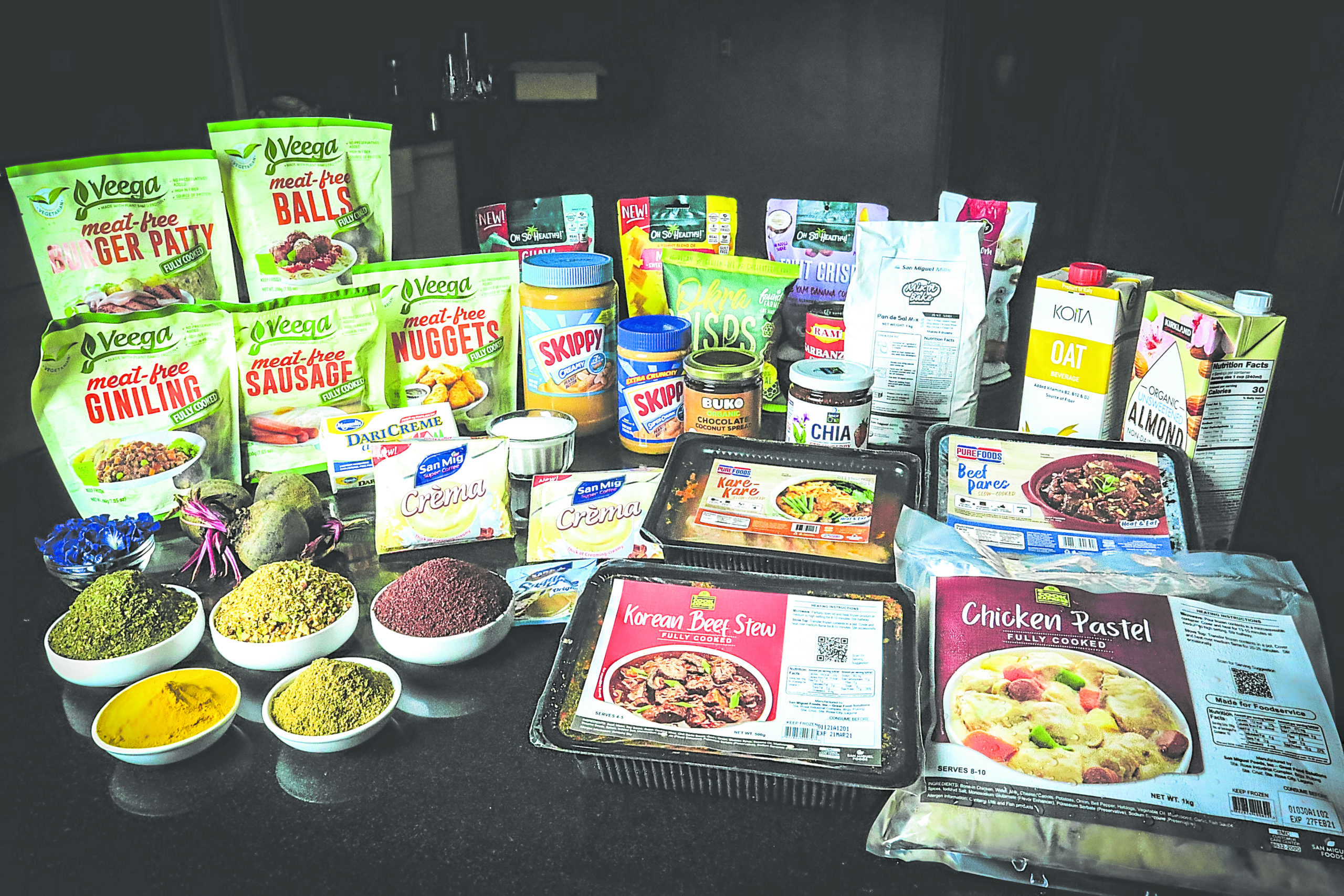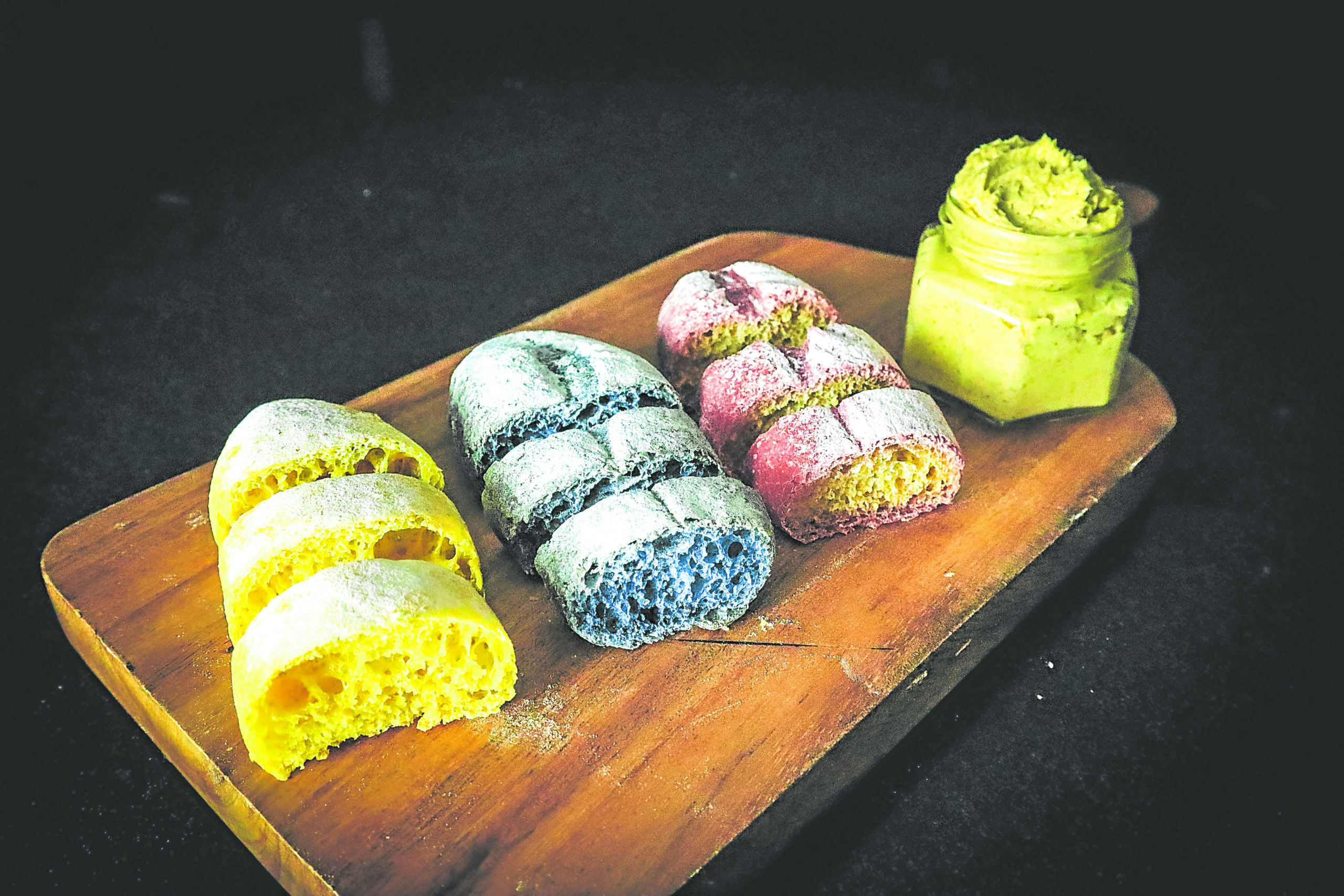The pandemic saw the rise of home cooks and small entrepreneurs experimenting in their kitchens and churning out trays of sourdough and sushi bakes. This year—and the next two to three—will see more of the same, if the food trends identified by San Miguel Foods’ Culinary Center pan out.
In a virtual briefing held recently, culinary services manager Llena Tan Arcenas listed major food trends expected to gain traction in the food and beverage industry.

Plant-based options
The first is a move to more plant-based food options. “Consumers are more open and ready for alternative, flexitarian types of diets that support immune health and cognitive function, promote relaxation and relieve stress,” Arcenas said. She attributed this to the current situation and “a seeping awareness of sustainability.”
She enumerated some plant-based meat alternatives like the Beyond Burger and Impossible Burgers; “bacon” made of tapioca starch, shiitake mushrooms, coconut oil and beet juice; pulled “pork” made of wheat gluten, soy and chickpea flour; and “chicken” made of soy protein and sunflower oil.
San Miguel Foods also has its own Veega line sold in supermarkets that consists of fully cooked meatballs, ground “beef,” nuggets, sausages and burger patties made from wheat, soy protein and mushrooms.
“This year, we will see a burst of interesting formats and creative ways of using plant-based ingredients.”
There will also be a rise in mock seafood and shellfish made with soy, seaweeds, legumes, vegetable oils and starches. Mushrooms, chickpeas and tofu will likewise dominate.
“Fruits, vegetables and edible plants will rise as natural food colorants with red predicted to dominate across food and drink products this year,” Arcenas said. Plant pigments include anthocyanins (pinks, purples and blues), carotenoids (reds, yellows and oranges), chlorophyll (greens) and betalains (vivid reds from red beet, amaranth, and prickly or cactus pear).
She added that allulose could be the next game changer when it comes to sweetness. Allulose is D-psicose, which is naturally present in small quantities in wheat, dried jackfruit, figs and raisins. Its texture and sweetness is similar to table sugar, yet has 90 percent fewer calories.

Upcycling
A second trend is upcycling, with people being more conscious about reducing food waste.
“Upcycling is all about using neglected or underused parts, recreating byproducts or waste into usable materials or products of higher value (repurposing),” Arcenas said.
Food waste utilization is not exactly new, since people have long been turning fruit peels into edible candies or preserves, and converting stale bread into bread pudding. The concept, however, has taken on a whole new level with consumers now being more proactive in recreating food waste, and food manufacturers getting involved.
Some examples include Re-grained, where spent grains used in brewing beer are turned into energy bars and snack puffs, and aquafaba or the water left in canned chickpeas being used to make “mayonnaise.”
Arcenas noted that there will be a ramping up in ready-to-eat options, pointing out how restaurants offering meal kits are determined to get a piece of the action.
“Meal kits, which involve minor consumer participation through cooking/reheating or assembly, will be the level-up game of home cooks who learned to cook and bake during the pandemic. They are also a good means to ward off cooking fatigue of home cooks,” she said.
In the next two to three years, she expects to see a rise in people experimenting with global ethnic flavors starting with spices like India’s garam masala, North Africa’s dukkah and za’atar, and Middle Eastern sumac.
Arcenas said that beyond being Instagrammable, food and drink will also be beneficial to one’s well-being. “As people care more about their health, innovations in food and drinks will go beyond beauty and deliciousness to promote good immunity.”
Some functional herbs and ingredients she expects to trend include elderberry, echinacea, CBD or cannabidiol, valerian, and maca or Peruvian ginseng. Prebiotics to induce activity of good microorganisms, probiotics and botanical extracts will also gain more ground.










































